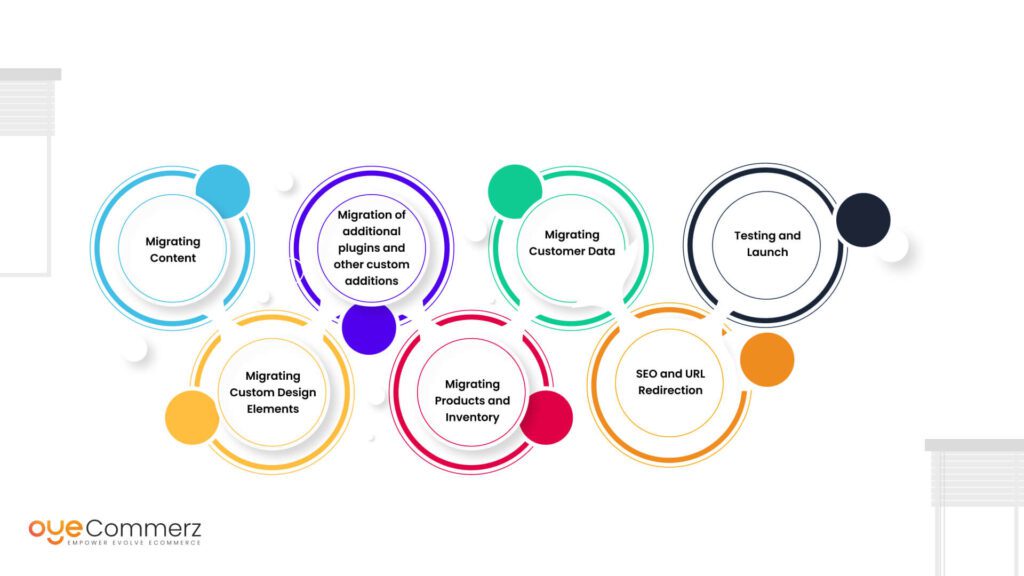In the dynamic landscape of online retail, choosing the right solution is vital for your business's success. If you’re currently using WP and thinking about a migration to an alternative, you’re not by yourself. Countless businesses are switching to utilize Shopify’s comprehensive capabilities, user-friendliness, and growth potential. This guide will take you through the steps of migrating from WordPress to Shopify smoothly, guaranteeing that you realize your eCommerce potential.
Why Migrate from WP to this platform?
Prior to starting the migration journey, it’s important to understand why this shift can be helpful for your digital storefront:
Accessible Tools: Shopify provides an intuitive system that makes easier store operations, making it easier for non-technical users.
Flexibility: As your brand expands, Shopify can accommodate higher visitors and sales without sacrificing performance.
All-in-One Solutions: Shopify provides integrated tools for search engine optimization, analytics, payment handling, and more, minimizing the necessity for multiple plugins.
Advanced Safeguards: With Shopify, you get access to robust security features that protect critical customer information.
Steps for a Seamless Migration
Migrating your eCommerce site from WordPress to Shopify requires several actions.
Here’s how to facilitate a successful transition:
Plan Your Migration Plan
Kick-off by drafting your migration plan. Pinpoint which elements of your present site you want to move, such as:
Inventory information
Client data
Order history
Posts
Choose the Appropriate Migration Package
Depending on your requirements, select a migration plan that aligns with your business. Professional services delivers various options:
Starter Package: Suitable for compact stores with fewer products.
Mid-Tier Plan: Shopify meta tag updates Recommended for growing businesses with more complex needs.
Comprehensive Solution: Excellent for big stores demanding extensive customization.
Secure Your Data
Before starting the migration, ensure that you have a full archive of your WordPress site. This action is crucial in the event anything goes wrong during the migration.
Export Your Information from WordPress
Leverage Shopify solutions by OyeCommerz plugins or alternative solutions to transfer key content from your WordPress site:
Inventory
Users
Sales records
Content pieces
Upload Data into Shopify
When you have your data retrieved, use Shopify’s import tools or external apps to transfer your information into your Shopify store. Verify that all data is accurately structured and placed.
Personalize Your Shopify Store
Once importing content, adjust your Shopify platform’s theme to align with your style. Look into engaging a developer if you require detailed customization.
Set Up Payment Gateways and Delivery Settings
Arrange transaction methods and shipping settings in Shopify to facilitate a smooth transaction experience for customers.
Adopt Search Engine Optimization Best Practices
To keep your online visibility during the transition:
Implement 301 redirects from old URLs to new ones.
Refresh descriptions.
Optimize media and text for SEO.
Test Your New Store
Before going live, thoroughly test your migrated site. Identify any discrepancies, payment processing issues, or missing data.
Launch Your Store
Once everything is in place, it’s time to go live! Share the change to your clients and motivate them to experience the updated capabilities of your Shopify store.
Post-Migration Support
Following releasing your updated store, continued help is essential. Consider partnering with experts who can help with:
Troubleshooting
Promotional campaigns
Improvement strategies
Conclusion
Migrating from WP to Shopify can be a crucial decision for your online retail. By using this guide and leveraging professional services like those offered by OyeCommerz, you can achieve a effortless transition that enhances your business potential. Accept the shift and unlock the advantages of Shopify today!
